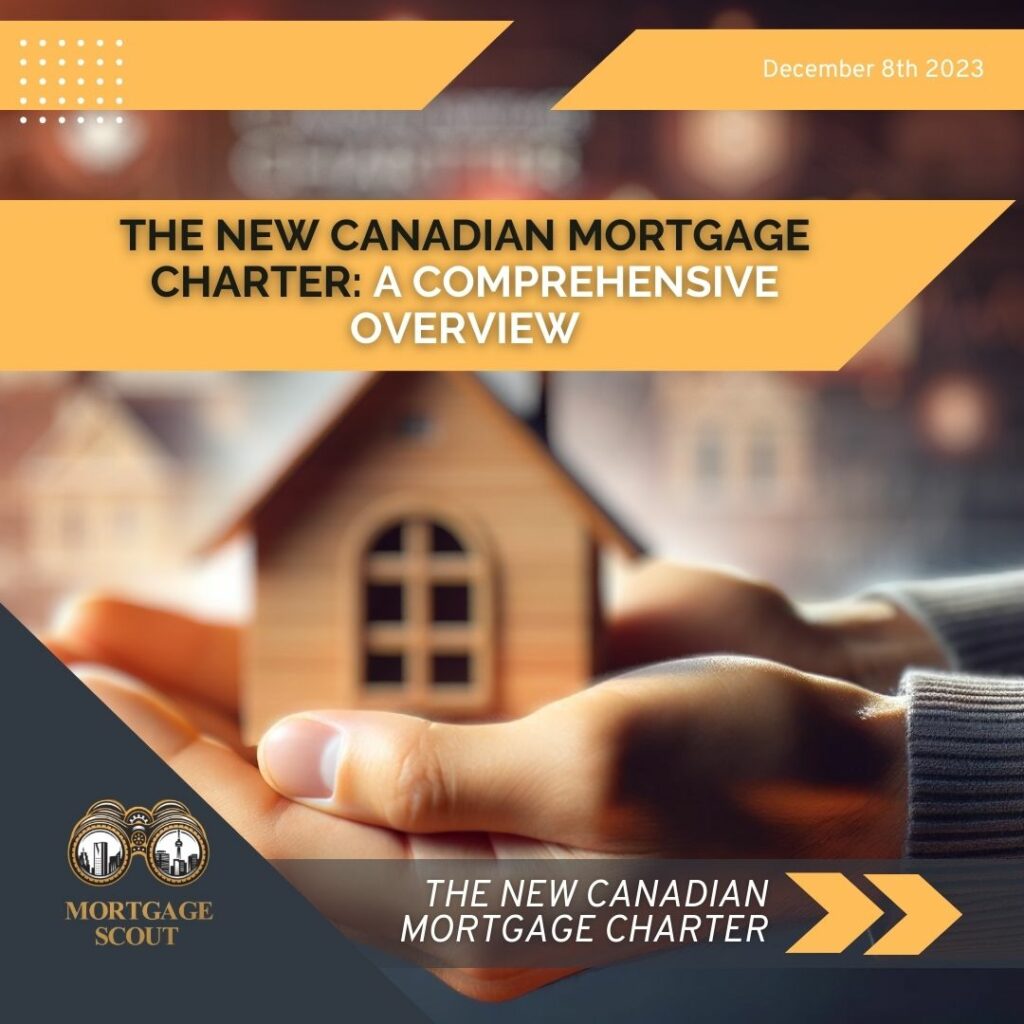
In November 2023, the Canadian government introduced the Canadian Mortgage Charter as part of its 2023 Fall Economic Statement. This Charter is a pivotal move in the financial services sector, addressing the challenges faced by Canadians with mortgages, especially during economic fluctuations.

Key Features of the Mortgage Charter
The Mortgage Charter outlines six specific relief measures:
- Extension of Amortization Periods: Allowing temporary extensions for at-risk mortgage holders.
- Waiving of Fees: Eliminating fees and costs for relief measures.
- Easing Insured Mortgage Holder Transitions: Permitting insured mortgage holders to switch lenders at renewal without requalifying under the insured minimum qualifying rate.
- Proactive Communication with Homeowners: Mandating that lenders contact homeowners 4-6 months before mortgage renewal, providing information on renewal options.

- Flexible Payment Options for Homeowners: Enabling at-risk homeowners to make lump sum payments or sell their principal residence without prepayment penalties.
- No Interest on Interest: Preventing the charging of interest on interest during periods of negative amortization due to mortgage relief measures.
Implications and Benefits
The Charter is designed to protect consumer rights during mortgage renegotiations, reflecting a proactive approach to financial stress management for homeowners. It emphasizes the need for fair, reasonable, and timely support, especially in light of the financial burdens associated with homeownership. The Charter’s focus on communication and flexibility can provide significant relief to homeowners facing financial challenges.
Current Housing Market Context

The introduction of the Mortgage Charter comes at a time when variable-rate mortgage holders are experiencing significant increases in interest payments. This rise is particularly noticeable when compared to those with fixed-rate mortgages. For example, a homeowner with a five-year insured variable-rate mortgage of $500,000 could pay substantially more in interest by the end of 2023 compared to a fixed-rate mortgage holder, underlining the need for supportive measures like those in the Charter.
Government's Broader Efforts

In addition to the Mortgage Charter, the Canadian government is taking further steps to address housing affordability. This includes increasing the size of the mortgage-bond program by 50%, with the annual limit for Canada Mortgage Bonds rising to C$60 billion. An additional C$20 billion is allocated towards financing rental housing projects, aiming to stimulate apartment construction and manage housing prices.
Conclusion

The Canadian Mortgage Charter represents a significant effort by the government to provide targeted support to homeowners facing financial stress. By addressing key issues in the mortgage and housing markets, it aims to ensure more Canadians can maintain their homes and manage financial pressures effectively





